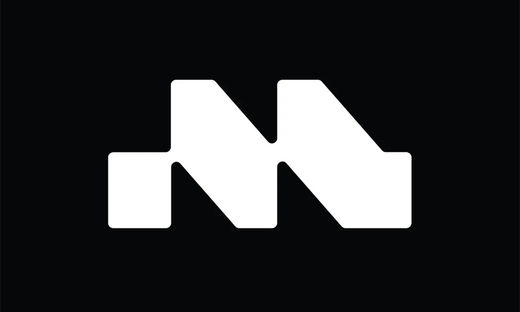Sell Logo Designs On Adobe Stock | Complete Review

In the expansive digital marketplace, Adobe Stock emerges as a premier destination for creative professionals looking to monetize their artistic endeavors. Specifically, for graphic designers, the platform offers a unique opportunity to sell logo designs to a global audience. Adobe Stock not only integrates seamlessly with Adobe's suite of design tools, making the upload and management process straightforward, but it also connects designers directly to a vast network of potential buyers, from small startups to large corporations seeking distinctive branding elements.
As part of the Adobe Creative Cloud, Adobe Stock provides a robust environment where designers can exhibit their work, reach a diverse clientele, and generate revenue through direct sales of their designs. The platform's user-friendly interface and comprehensive support system simplify the navigation and sales processes, making it an appealing choice for both seasoned designers and those new to the field of digital commerce. By leveraging Adobe Stock, designers can effectively broaden their professional reach and establish a lucrative stream of income through the sale of their logo designs.
Benefits of Selling on Adobe Stock
Adobe Stock offers numerous advantages for designers aiming to sell logo designs. One of the most significant benefits is the platform's extensive reach. With millions of users worldwide, designers have the opportunity to showcase their logos to an international audience, increasing the potential for sales and exposure. The integration with Adobe Creative Cloud allows for a seamless workflow from creation to sale, where designers can easily upload their logos directly from programs like Adobe Illustrator.
Furthermore, selling on Adobe Stock allows designers to earn competitive royalties for their work. The platform operates on a royalty system that compensates creators fairly based on the usage of their designs, offering both rights-managed and royalty-free options. This flexibility ensures that designers can choose the best licensing terms for their work.
Adobe Stock also provides robust tracking tools that allow designers to monitor how their logos are performing in terms of views and sales. This data can be invaluable for adjusting strategies and improving sales outcomes. Additionally, because Adobe Stock is a respected and well-known marketplace, having your work featured on it can enhance your professional reputation and credibility in the design community.
Designers benefit from Adobe Stock’s promotional activities as well, which often highlight new or popular creators and can significantly boost visibility. This exposure is crucial for building a personal brand and establishing a foothold in the competitive design market.
Target Audience
The target audience on Adobe Stock for logo designs is diverse, encompassing a wide range of buyers looking for high-quality, unique branding elements. This includes small businesses and startups that are in the process of building their brand identity and seek affordable yet professional logo designs. Adobe Stock provides these companies with a vast selection of options, catering to various styles and industry specifications.
Large corporations also frequent Adobe Stock, often searching for logos that can be used for new products, sub-brands, or promotional campaigns. These companies appreciate the high standard of quality assurance that Adobe Stock provides, ensuring that they purchase designs that are not only visually appealing but also legally compliant for commercial use.
Moreover, marketing agencies and freelance marketers utilize Adobe Stock to find logo designs for clients. These professionals often need quick solutions that are adaptable and can be legally incorporated into broader marketing strategies. Adobe Stock’s flexibility and comprehensive licensing options make it an ideal resource for these purposes.
Creative professionals, including other graphic designers, often browse Adobe Stock for inspiration or elements that can be incorporated into more complex projects. They benefit from the variety and creativity of logos available, which can serve as a foundational element in larger design tasks.
Overall, Adobe Stock caters to a broad audience, making it an ideal platform for designers to sell their logo designs to buyers across different sectors and levels of need.
Creating an Account
To start selling logo designs on Adobe Stock, the first step is to create a contributor account. The process is straightforward and designed to be user-friendly for creatives of all backgrounds. Begin by visiting the Adobe Stock Contributor page. If you already have an Adobe ID from using other Adobe Creative Cloud apps, you can use the same credentials to log in. If not, you will need to create a new Adobe ID, which is a simple process requiring basic information like your email address and a password.
Once logged in, you will be prompted to complete your contributor profile. This includes entering your personal information and setting up payment details. Adobe Stock offers various payment methods, including direct deposit and PayPal, to accommodate contributors worldwide. It’s important to ensure that all information is accurate and up-to-date to avoid any issues with payment once you start selling your designs.
After setting up your account, Adobe Stock will require you to accept the terms of service. These terms cover the legal aspects of your participation as a contributor, such as copyright ownership and royalty agreements. It is crucial to read and understand these terms to ensure that your submissions comply with Adobe Stock’s policies.
With your account ready, you can begin uploading your logo designs and tapping into Adobe Stock’s vast market, showcasing your work to potential buyers across the globe.
Submission Guidelines
When submitting logo designs to Adobe Stock, adhering to specific submission guidelines is crucial for approval and success on the platform. First, ensure that all logo designs are original and you hold the copyrights. Adobe Stock strictly prohibits the submission of third-party copyrighted material without proper authorization.
Your logo submissions must meet high-quality standards with regard to resolution and file format. Adobe Stock generally accepts vector files, which are preferred for logos due to their scalability. Ensure that your files are uploaded in AI, EPS, or SVG formats to maintain design integrity at any size.
Additionally, your logo designs should not include any identifiable brands or copyrighted elements, such as existing logos or trademarked symbols. This includes avoiding the use of text unless it is part of the logo design and does not infringe on any trademarks.
It is also essential to provide accurate and relevant keywords with each submission. Keywords increase the visibility of your designs to potential buyers searching for specific styles or themes. Think carefully about the words that best describe your logo, including both the visual elements and the potential uses.
Lastly, all submissions go through a review process by Adobe Stock’s content team. This review ensures that all content meets their quality and legal standards. Rejection can occur for reasons such as low quality, presence of copyrighted material, or incorrect file formats. If a submission is rejected, Adobe Stock typically provides feedback, allowing you to make necessary adjustments and resubmit.
Tagging and Keywords
Effective tagging and keyword use are critical for selling logo designs on Adobe Stock, as they directly influence how easily potential buyers can discover your work. When uploading a logo, consider what keywords buyers might use to find a design like yours. Keywords should be relevant, specific, and comprehensive.
Start by describing the logo’s visual elements and style, such as "minimalist," "vibrant," "corporate," or "abstract." Include the colors and symbols used, and think about the emotions or values the logo conveys, such as "innovation," "trust," or "strength." It’s also beneficial to consider the industries that might use the logo, like "technology," "fashion," or “food."
Use combinations of general and niche keywords. General keywords have a broader reach, while niche keywords target specific audiences and are less competitive. A mix of both types increases the chances of your logo appearing in search results across different buyer segments.
Adobe Stock allows a generous number of keywords, but quality over quantity prevails. Focus on the most relevant keywords, aiming for around 15-20 per logo. Avoid keyword stuffing as it can negatively impact the visibility of your designs. Instead, prioritize accuracy and relevance to ensure the best possible match with potential buyers' searches.
Pricing Strategies
Determining the right pricing for logo designs on Adobe Stock is crucial for maximizing earnings while remaining competitive. When setting prices, consider several factors to ensure your logos are attractively positioned within the marketplace.
Firstly, research the market to understand the going rates for logo designs similar to yours in style and complexity. Adobe Stock features a wide range of pricing, and understanding where your work fits within this spectrum can help you set competitive yet fair prices.
Consider the exclusivity and potential usage of your logos. Exclusive designs that offer full rights to the buyer can be priced higher than non-exclusive or template-based logos. If your logo is highly unique and versatile, it can command a higher price.
Evaluate your experience and reputation in the design industry. Established designers with proven track records can typically price their logos higher than those new to the field. Use your portfolio’s strength and past sales performance on Adobe Stock as indicators of what buyers might be willing to pay for your work.
Offer different pricing tiers based on logo customization levels. Basic designs that serve more as templates can be priced lower, while fully customized logos tailored to specific client needs can be priced higher.
Finally, be flexible and responsive to market changes. Monitor how your logos perform and adjust prices as needed to reflect demand, competition, and feedback from buyers. This dynamic approach can help you optimize your earnings on Adobe Stock and ensure your pricing strategy aligns with market conditions and buyer expectations.
Royalty Rates
Understanding the royalty rates on Adobe Stock is crucial for designers who wish to sell logo designs on the platform. Adobe Stock offers a competitive royalty system that rewards creators for their work, with rates that can vary based on several factors, including the type of license purchased by the buyer and the exclusivity of the content.
For standard licenses, Adobe Stock pays a base rate of 33% of the sale price to the designer. This means if a logo is sold for $100, the designer earns $33. This rate applies to most logo sales, where the designs are used for general business branding and marketing purposes.
For enhanced licenses, which allow buyers to use the logos for products for resale or in large print runs, the royalty rate can be higher. These licenses are priced higher than standard licenses, providing a larger income per sale, which significantly benefits the creator.
Adobe Stock also occasionally offers special incentives and promotions that can temporarily increase royalty rates or provide bonuses for new submissions or specific content types. Staying informed about these opportunities can help maximize earnings.
It’s important for designers to regularly review their sales and the performance of their logos to understand which designs are more popular and potentially adjust their focus to cater to market demands. By understanding and leveraging the royalty structure of Adobe Stock, designers can strategically price their logos and optimize their earnings.
Promoting Your Portfolio
Promoting your Adobe Stock portfolio is essential to increase visibility and sales of your logo designs. A well-promoted portfolio attracts more viewers, potentially leading to more sales. Here are effective strategies to enhance your portfolio’s presence on Adobe Stock.
First, ensure your portfolio is fully optimized with high-quality images, detailed descriptions, and appropriate keywords. This helps in improving your visibility in search results within Adobe Stock. Regularly updating your portfolio with new logos can also keep it fresh and more appealing to buyers.
Social media is a powerful tool for promotion. Share your Adobe Stock portfolio on platforms like LinkedIn, Instagram, and Twitter. Tailor your posts to highlight specific logos or collections and use hashtags relevant to your designs, such as #LogoDesign, #Branding, or #AdobeStock.
Creating a blog or a website where you discuss your design process and showcase your work can also drive traffic to your portfolio. Include direct links to your Adobe Stock content to make it easy for visitors to find and purchase your designs.
Networking with other designers and participating in online forums and design communities can increase your profile and direct other creatives to your Adobe Stock portfolio. Collaboration with other artists can also lead to joint projects that boost exposure.
Lastly, consider using paid advertising options, such as Google Ads or social media ads, to target potential buyers who are specifically looking for logo designs. These ads can direct traffic directly to your Adobe Stock portfolio, increasing the likelihood of sales.
Customer Interaction
Effective customer interaction is a pivotal element for designers selling logo designs on Adobe Stock. Engaging professionally and promptly with potential buyers can significantly enhance your reputation and increase sales. When buyers show interest in your logos, they may have questions or require customizations. Responding quickly and courteously can create a positive impression and encourage sales.
Adobe Stock provides a platform for interaction through user comments and private messaging. Ensure that you check your account regularly to address any inquiries or feedback. Providing detailed descriptions and responding to questions about your logos can help clarify what buyers are purchasing, reducing the likelihood of misunderstandings and increasing buyer confidence.
If a buyer requests customizations, be clear about what changes you are willing to make and any additional costs that might apply. Transparency about the scope of work and pricing helps maintain good relationships and avoids potential disputes.
Educating buyers about the licensing options available for your logos is also beneficial. Explain the differences between standard and enhanced licenses, particularly in terms of usage rights, which can influence their purchasing decisions.
Success Stories
Highlighting success stories of designers who have prospered by selling logo designs on Adobe Stock can serve as both inspiration and validation for potential contributors. Many designers have transformed their freelance careers by leveraging the platform's extensive reach and integrated tools.
One notable success story is that of a graphic designer from the United States, who started selling logo designs on Adobe Stock as a side project. Within a year, her unique, contemporary logos gained popularity, leading to steady monthly sales that surpassed her initial expectations. Her success is attributed to her distinctive design style and strategic use of keywords that targeted emerging business sectors.
Another success involves a European designer specializing in eco-friendly and sustainable logo designs. By focusing on a niche market, the designer was able to capitalize on the growing trend of environmental consciousness among businesses. His portfolio on Adobe Stock attracted numerous companies looking for green and clean branding, significantly boosting his sales and professional visibility.
These stories underline the importance of understanding market trends and effectively marketing your portfolio. Designers who identify and tap into niche markets, maintain high standards of professionalism, and actively engage with their audience can achieve significant success on Adobe Stock.
Conclusion
Selling logo designs on Adobe Stock offers designers a lucrative opportunity to reach a global audience and earn significant income. By adhering to submission guidelines, effectively using keywords, and engaging with customers, designers can maximize their visibility and sales potential on this platform. Whether you are a seasoned professional or a newcomer to the field, Adobe Stock provides the tools and audience to help you succeed. Embrace the chance to showcase your creativity, respond to market trends, and build a rewarding career by selling your logo designs on Adobe Stock.
Let Us Know What You Think!
Every information you read here are written and curated by Kreafolk's team, carefully pieced together with our creative community in mind. Did you enjoy our contents? Leave a comment below and share your thoughts. Cheers to more creative articles and inspirations!
















Leave a Comment